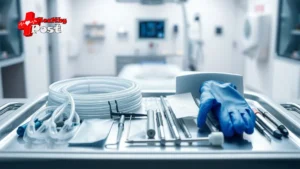What is pneumothorax? How to treat pneumothorax?
What is pneumothorax? To know what pneumothorax is, you must first understand the structure of the pleural cavity. There are two layers of membrane outside the human lung tissue, called pleura. The one attached to the lung is called the visceral pleura, and the one attached to the thorax is the parietal pleura. The two layers of pleura constitute the pleural cavity, one on each side, which are not connected to each other.
The pleural cavity is a closed cavity with no gas and a negative pressure state, which is conducive to the expansion of the lungs and the return of venous blood and lymph. When the integrity of the pleural cavity is destroyed, external gas or gas in the alveoli enters the pleural cavity, and pneumothorax will occur. In addition to traumatic pneumothorax caused by trauma, spontaneous pneumothorax is more common in clinical practice.
Spontaneous pneumothorax, as the name implies, is a pneumothorax that occurs on its own. Spontaneous pneumothorax can be divided into two categories. One category is more common in young people with no obvious lung disease, called primary spontaneous pneumothorax , which is more common in slender people and occurs when lifting heavy objects, being nervous or engaging in strenuous activities. The other category is more common in the elderly, that is, those over 60 years old, who have primary lung diseases, such as chronic bronchitis, emphysema, or tuberculosis, silicosis, etc. There are bullae in the lungs , which rupture and cause pneumothorax. Pneumothorax secondary to lung disease is called secondary spontaneous pneumothorax
Pneumothorax refers to the phenomenon of gas accumulation in the chest cavity due to the failure to be discharged in time. It is called pneumothorax. The general cause of pneumothorax is bacterial infection of the lungs or rupture of certain tissues in the lungs. Generally, there are more male patients and the incidence rate is relatively high. If not treated in time, it may cause death. So how to treat pneumothorax?
1. General treatment. (What is pneumothorax)
If you suffer from pneumothorax, you should rest more often, ventilate frequently, keep the indoor air flowing, ensure there is enough oxygen, and minimize exercise that involves lung activity.
2. Exhaust therapy.
If the symptoms of pneumothorax are severe and breathing difficulties occur, pleural puncture may be required to help expel the accumulated gas in the body and reduce harm to the body.
3. Surgical treatment.
Normally, if the pneumothorax is severe, it can be treated with surgery, because on the one hand, surgical treatment can prevent air leakage in the lungs, and on the other hand, it can prevent other lung lesions or reduce the possibility of recurrence.
4. Bronchoscopy-assisted occlusion treatment.
In the past, drainage was generally used to treat pneumothorax, but through continuous improvements, bronchoscopic balloon exploration can now be used to find the damaged area or block the damaged area to achieve the treatment effect.
How to prevent pneumothorax in daily life?
1. Generally, when pneumothorax occurs, there will be symptoms of chest pain and difficulty breathing. Therefore, if the chest pain occurs for a long time and cannot be relieved, you should go to the hospital for examination.
2. Reduce smoking. Smoking will damage the cell tissue of the lungs. If you do this for a long time, it will not only cause pneumothorax but also may cause cell canceration and lead to cancer. So you should quit smoking and drinking.
3. Generally speaking, long-term underwater activities, such as divers, will increase the incidence of pneumothorax. So either try to reduce this activity as much as possible, or have surgery to remove part of the pleura.
4. If you have pneumothorax symptoms, it is best to avoid flying as the condition may be aggravated at high altitudes. If you cannot avoid flying, you need to receive treatment or some relief measures before boarding.
5. Avoid going to places with serious environmental pollution to avoid inhaling unclean air and causing damage to lung tissue.
6. If you have symptoms of pneumothorax, you can relieve them by yourself if they are mild. If they cannot be relieved for a long time, you should go to the hospital for examination and treatment. You should also go to the hospital for regular examinations.
If you find this article useful, please like it or recommend it to your friends,


